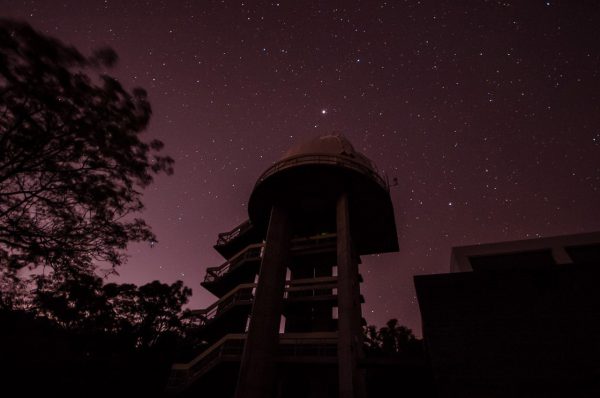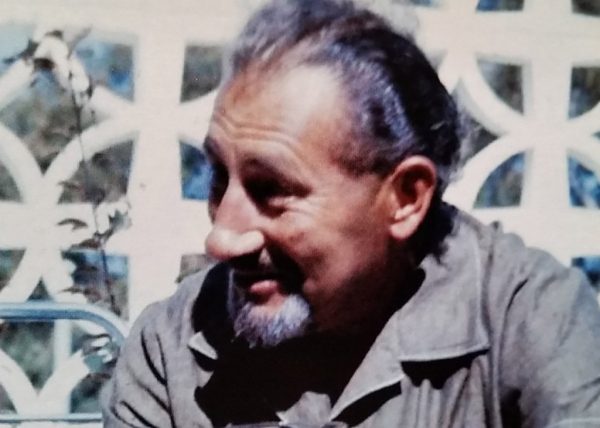The Perth-Lowell Telescope Dome 1968-1971

I’d like to describe to you, the fascinating events leading up to ‘first light’ for the 24″ Cassegrain telescope housed in the Perth-Lowell dome. This information forms part of my requirements for a Masters Degree in astronomy and explains how and why the dome tower is the shape and size that you see today. And it’s not as boring as you’d think!
This is the first of two instalments, the second to come in June.
Part 1: Poland to Sydney
Let me start broad. The oldest known construction for sky-watching is a 7000-year-old rock pattern in a paddock in south-east Australia. From that to the European Southern Observatory’s OverWhelmingly Large telescope, and everything in between, optical, land-based observatories have several basic features in common. Mid-twentieth century structures were no different in requiring an open space to build, and a raised lot away from the general population. But such projects are now only made worthwhile when very specific requirements are requested, justified, cost, approved and realised. Or are they?
In 1966, one of (now) eleven university/publicly funded Australian observatories, the Perth Observatory relocated 25 km due east, to the top of a nearby escarpment. At 380 m, the new location in the Darling Ranges is seven times higher than the previous site, light pollution from Perth’s half million residents being the primary reason for the move. The then Government Astronomer, Bertrand Harris, would have been pleased to have a raised lot away from the general population, but he had no inkling of the windfall coming his way over the next five years.
The excitement of the Apollo decade of space travel began in 1961, and by 1969 NASA’s International Planetary Patrol Program (IPPP) was collecting observations ahead of launching Viking landers to Mars. NASA engaged the Lowell Observatory in Arizona, who then wished to establish and operate six (eventually eight, of which Perth Observatory was one of the most successful) telescopes strategically placed around the globe, enabling observation hand-offs that ensured ’round the clock’ data collection.
Director of the Planetary Research Centre at the Lowell Observatory, Willian Baum, successfully wooed the Perth Observatory’s Government Astronomer from mid-1968, and eventually, the Perth Observatory was the proud possessor of a brand new 24″ Cassegrain reflector. It saw first light on Apr 8th, 1971 and sent off to NASA its first observations on Apr 21, 1971. But a lot of water needed to go under the bridge before that could happen.
Bulldozers had arrived onsite at the Perth Observatory in early July 1970, to prepare the site for construction, and the eucalypts of the Jarrahdale State Forest presented no real obstacle, even providing some marketable timber. The new site was higher, darker and more remote than its predecessor, and clearing land for the new telescope facility simply required a request of the lessor of the Perth Observatory property, the WA Forests Department.
There was one stipulation the astronomers agreed on: the new dome should be “high enough to avoid ground-level seeing problems”. Now, to quote Andrew Williams: “Elevated domes for telescopes are extremely rare, and only a handful exists worldwide, making the Lowell dome a truly unique building.” In fact, there are very few indeed. I would also add ‘free-standing’ to the definition because so many around the world are part of another significant building.
Too quick… let’s wind back the clock to 1915 in Czestochowa, southern Poland. This was just one year after the Nazis rolled into town and the Russian Imperial Army abandoned the city.

Tadeusz Andrzejaczek had a rough start to life. No sooner had he arrived, and he lost his parents to economic and personal circumstances, so was taken to his grandparents’ home in a regional town called Bydgoszcz, over 300 Km north. Poland as we know it was in turmoil. It wasn’t until 1919 (Tad was four) that the Treaty of Versailles reunited Poland as a single state entity.
Tad went to school in Bydgoszcz, then moved to Warsaw to complete his schooling. He loved to draw and paint and he made a name for himself for his detailed and precise drawings of archaeological digs. In 1939 he signed up for military service but with a week or so, near Warsaw, he’d been injured by shrapnel wounds to a leg, and taken to a concentration camp where he was to spend the rest of the war.
While in the camp, Tad enjoyed the company of French inmates much more than the Polish. He dressed, spoke and pretended to be French. And a good thing too – when the Nazi’s decided to slaughter all the Poles, but not the French, guess where Tad was? After the war, he was transported to an Italian displacement camp, then on to London. There, he worked for the Greater London Council while he qualified as an architect at the Polish College of London, graduating in 1951.
Tad and wife Maria (an underground resistance fighter from Warsaw), plus two children, left the UK on their way as “ten-pound-tourists”, to Sydney. First Aussie dock was Fremantle on New Years Day, 1954, and so started the Australian adventure of this extraordinary family.
The picture is Tad taken not long after arriving back in Perth around 1965.





